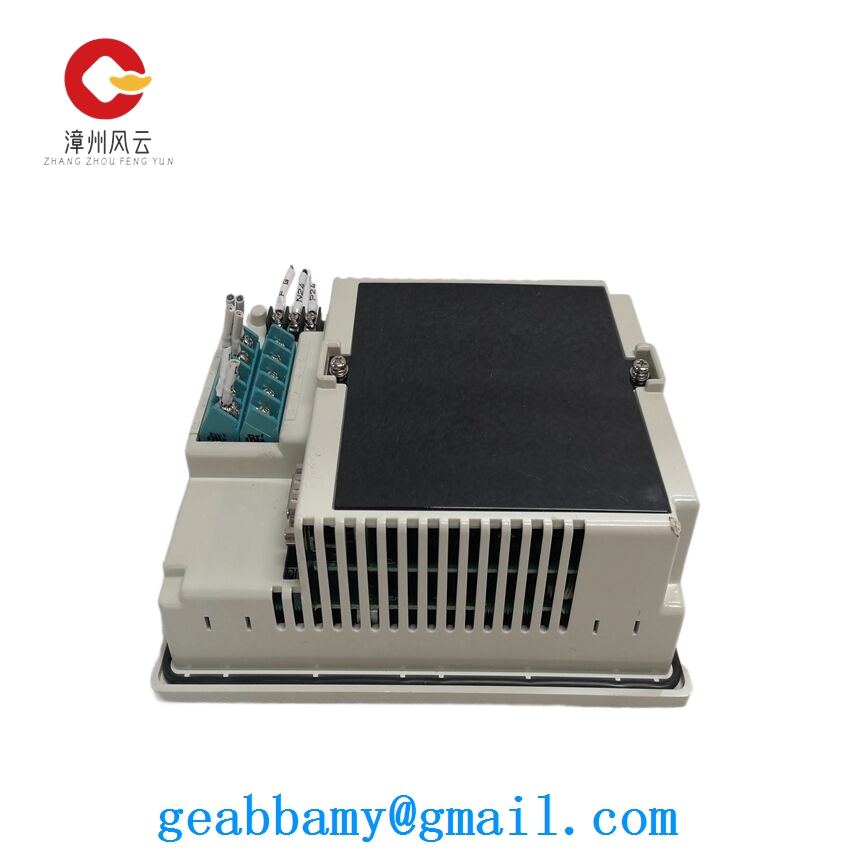Technical Parameters Introduction of ABB COBUX R1A 27540050 Flash PCB Card (S/n: 4910573198, Mother Board)

1. General Overview
The ABB COBUX R1A 27540050 Flash PCB Card with serial number 4910573198, serving as a mother – board, is a critical component within ABB’s industrial control and automation systems. It is designed to provide reliable data storage, processing, and communication functions, ensuring the smooth operation of complex industrial processes.
2. Electrical Parameters
- Power Supply Requirements
- Voltage Input: This PCB card typically operates within a specific voltage range. For instance, it may require a DC voltage input in the range of 24V ± 5%. This ensures stable power supply and prevents damage due to voltage fluctuations.
- Power Consumption: The power consumption of the card varies depending on its operational state. In idle mode, it may consume around 5 – 10W, while under full – load operation, the power consumption could increase to 20 – 30W. This information is crucial for power supply sizing and energy management in the overall system.
- Signal Voltage Levels
- The card uses standardized signal voltage levels for communication with other devices in the system. For digital signals, common levels include 5V TTL (Transistor – Transistor Logic) or 3.3V LVTTL (Low – Voltage TTL). These voltage levels ensure proper signal transmission and reception, minimizing errors and interference.
3. Memory Parameters
- Flash Memory Capacity
- The Flash PCB card is equipped with a certain amount of Flash memory. For example, it may have a capacity of 128MB or 256MB. This Flash memory is used for storing firmware, configuration data, and program – related information. It provides non – volatile storage, meaning the data is retained even when the power is turned off.
- Memory Access Speed
- The memory access speed is an important parameter that affects the overall performance of the card. The read and write speeds of the Flash memory can vary, but typically, the read speed is faster than the write speed. For instance, the read speed could be around 10 – 20MB/s, while the write speed may be in the range of 5 – 10MB/s.
4. Communication Parameters
- Supported Communication Protocols
- The card supports multiple communication protocols to enable seamless integration with other industrial devices. Common protocols include:
- Modbus: A widely used serial communication protocol in industrial automation. It allows for simple and efficient data exchange between the PCB card and other Modbus – compatible devices such as PLCs, sensors, and actuators.
- Ethernet/IP: An industrial Ethernet protocol that provides high – speed and reliable communication over Ethernet networks. It enables the card to connect to larger industrial networks and communicate with SCADA systems, human – machine interfaces (HMIs), and other networked devices.
- The card supports multiple communication protocols to enable seamless integration with other industrial devices. Common protocols include:
- Communication Interfaces
- It is equipped with various communication interfaces. For example, it may have an RS – 232/RS – 485 serial interface for Modbus communication and an Ethernet RJ – 45 interface for Ethernet/IP communication. The serial interface provides a simple and cost – effective way for short – distance communication, while the Ethernet interface offers high – speed and long – distance communication capabilities.
5. Mechanical Parameters
- Dimensions
- The PCB card has specific physical dimensions. For instance, it may measure 160mm x 100mm x 20mm (length x width x height). These dimensions are important for installation in control cabinets or other enclosures, ensuring proper fit and clearance for ventilation and maintenance.
- Mounting Type
- It is designed for standard PCB mounting, typically using through – hole or surface – mount technology. The mounting holes on the card are compatible with standard mounting racks or panels in industrial control systems, allowing for easy and secure installation.
6. Environmental Parameters
- Operating Temperature Range
- The card is designed to operate within a specified temperature range. It can typically withstand an operating temperature range of – 20°C to + 70°C. This ensures reliable performance in a variety of industrial environments, from cold storage facilities to hot manufacturing plants.
- Humidity Resistance
- It has a certain level of resistance to humidity. The card can operate safely in environments with relative humidity levels up to 95% non – condensing. This humidity resistance is important to prevent moisture – related damage such as corrosion and short – circuits.
7. Protection Features
- Electrostatic Discharge (ESD) Protection
- The PCB card is equipped with ESD protection circuits to prevent damage from electrostatic discharge. ESD can occur during handling or installation and can cause permanent damage to sensitive electronic components. The ESD protection circuits ensure that the card can withstand ESD events up to a certain level, such as 8kV contact discharge and 15kV air discharge.
- Over – voltage and Over – current Protection
- It also has over – voltage and over – current protection mechanisms. In the event of a voltage surge or excessive current flow, these protection circuits can quickly detect and isolate the fault, preventing damage to the card and other connected devices.
In conclusion, the ABB COBUX R1A 27540050 Flash PCB Card (S/n: 4910573198, Mother Board) is a sophisticated component with a comprehensive set of technical parameters. These parameters ensure its compatibility, reliability, and performance in industrial control and automation applications.


